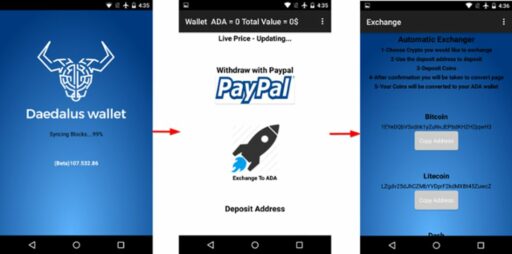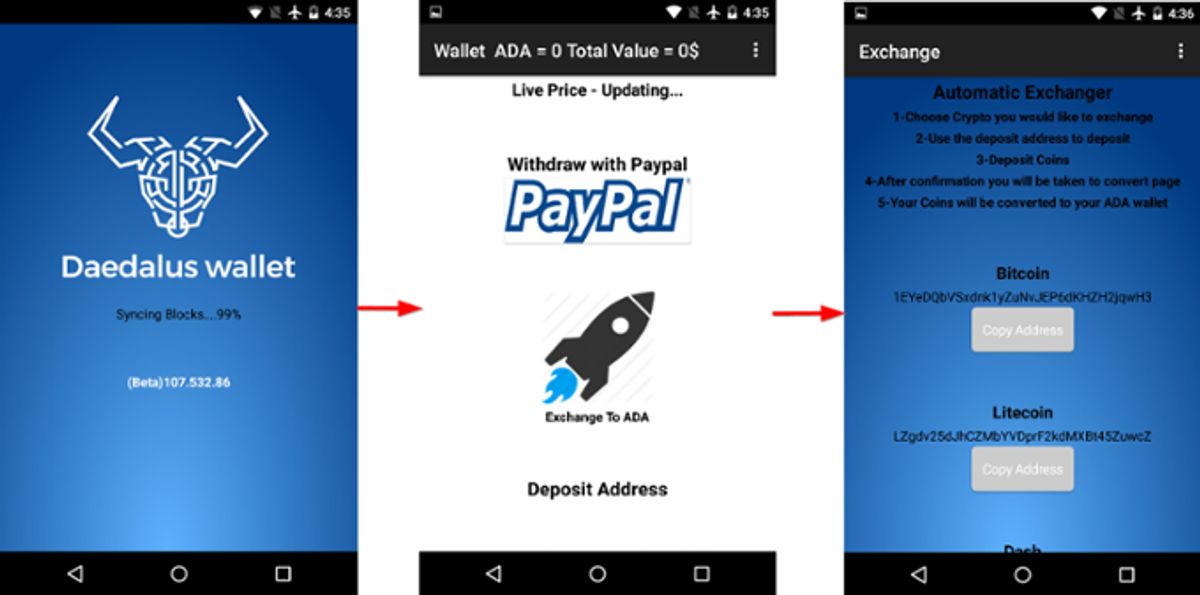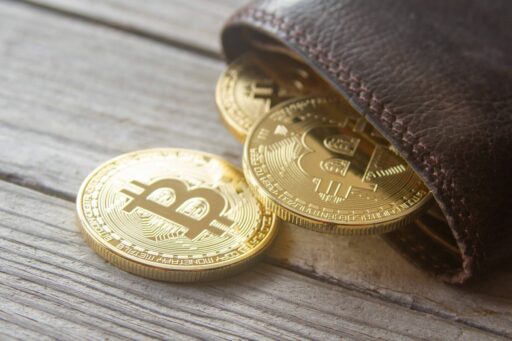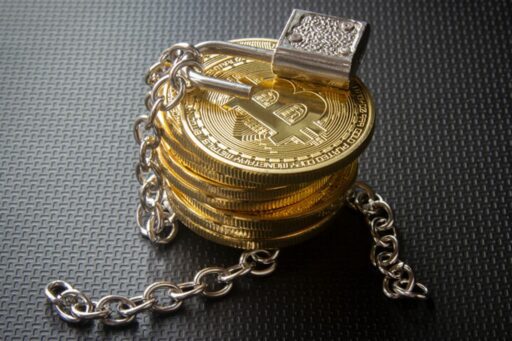Entering the world of cryptocurrency can be an exciting journey, and one of the first steps is setting up a crypto wallet. This essential tool is your gateway to managing and securing your digital assets. Whether you’re a newcomer or a seasoned crypto enthusiast looking to set up a new wallet, this article will provide you with a comprehensive, step-by-step guide to getting started with your first crypto wallet.
Key Takeaways
- Choose a wallet that aligns with your cryptocurrency goals and security needs, whether it’s a hot wallet for convenience or a cold wallet for enhanced security.
- Follow the step-by-step process to install wallet software or extensions, create a strong password, and enable security features like two-factor authentication.
- Understand the critical importance of backing up your wallet and managing your private keys to prevent loss of funds.
- Learn how to fund your wallet, make transactions, and monitor your activity to effectively manage your cryptocurrency holdings.
- Maintain your wallet by regularly updating its software, staying informed about security practices, and knowing how to troubleshoot common issues.
Choosing the Right Wallet for Your Needs

Understanding Different Types of Wallets
When venturing into the world of cryptocurrencies, selecting the right wallet is crucial for ensuring the safety and accessibility of your assets. Understanding the different types of wallets is the first step in making an informed decision. There are two primary categories: hot wallets, which are software-based and connected to the internet, and cold wallets, which are hardware-based and store your crypto offline.
- Hot Wallets: Ideal for frequent transactions, they include web, desktop, and mobile applications. However, being online, they are more vulnerable to cyber attacks.
- Cold Wallets: Provide enhanced security by keeping private keys offline. They come in physical devices that can be connected to a PC when needed.
Each type of wallet has its own set of features and levels of security. For instance, hot wallets offer convenience and user-friendliness, while cold wallets are best for long-term storage due to their robust security measures. The best wallets of 2024 prioritize both security and innovation, catering to the evolving needs of users.
Assessing Your Cryptocurrency Goals and Security Requirements
Before choosing a wallet, it’s essential to define your cryptocurrency goals and objectives. Are you looking to trade frequently, or is your approach more about long-term holding? Your goals will influence the type of wallet you need.
Consider the security features that are non-negotiable for you. For instance, if you prioritize security over convenience, a hardware wallet might be the best choice. On the other hand, if you need quick and easy access to your funds, a software wallet could be more suitable.
- Begin by outlining your plans and when you aim to achieve them.
- Determine what features are indispensable for your crypto transactions.
- Choose between software and hardware wallets based on your security and convenience needs.
Best practices for securing funds include regular backups, avoiding sharing private keys, and using hardware wallets.
Finally, assess the core features you require in a wallet. A unique access key, the ability to set a personal password, and the option for two-factor authentication are critical for enhancing asset security.
Comparing Wallet Providers in the Market
Once you understand the types of wallets and have assessed your needs, the next step is to compare wallet providers. This involves looking at various factors such as security features, user interface, compatibility with different cryptocurrencies, and the provider’s reputation.
- Security features might include two-factor authentication, multi-signature support, and a history of security audits.
- Usability is key, so consider the wallet’s interface and how easy it is to access your tokens.
- Ensure compatibility with the cryptocurrencies you intend to use, and check for specific features like in-app swaps or DeFi integration.
- The provider’s reputation and user reviews can offer valuable insights into their reliability and service quality.
Remember, no single wallet will meet all demands, but prioritizing security, accessibility, and user experience will guide you to a suitable choice. It’s essential to balance these aspects to find a wallet that aligns with your cryptocurrency goals.
Setting Up Your Wallet: A Step-by-Step Process

Installing the Wallet Software or Extension
After choosing the right wallet that fits your needs, the next crucial step is to install the wallet software or add the browser extension. Software wallets provide convenient access to cryptocurrencies with user-friendly interfaces, and web wallets or browser extensions bridge traditional web interfaces with decentralized applications, enhancing your Web3 engagement.
To ensure a secure installation, always download the wallet from the official website. For example, when installing Leap Wallet, navigate through the ‘For Explorers’ menu on their official site to avoid counterfeit applications. Here’s a simple guide to get you started:
- Visit the official wallet website.
- Select the appropriate option to download the software or add the extension.
- Follow the on-screen instructions to complete the installation.
Once installed, you can proceed to create a new wallet by selecting the ‘Create new wallet’ option. This marks the beginning of your journey into managing your digital assets securely.
Creating a Strong and Secure Password
Creating a robust password is your wallet’s first line of defense. Avoid using simple or repeated passwords; instead, opt for a complex combination of letters, numbers, and special characters. Here are some tips to ensure your password’s strength:
- Use a mix of uppercase and lowercase letters.
- Include numbers and special characters.
- Make the password long enough, typically over 12 characters.
- Avoid using easily guessable information, like your name or birthdate.
Remember, storing your password in a secure location is as important as creating a strong one. Never store passwords in plain text on your devices or online. Consider using a password manager to keep track of your passwords securely.
After setting your password, proceed to activate additional security features offered by your wallet provider. These may include biometric authentication, Two-Factor Authentication (2FA), or multi-signature options. Regularly updating your wallet’s software ensures you have the latest security enhancements, providing an extra layer of protection for your digital assets.
Activating Additional Security Features
Once you’ve created a strong password, the next crucial step is to activate additional security features that your wallet offers. Enabling Two-Factor Authentication (2FA) is a widely recommended practice that adds an extra layer of security to your account. This typically involves receiving a code on your phone or email that you must enter in addition to your password when logging in.
- Use all your wallet’s security settings, such as biometric authentication and multi-signature options, if available.
- Regularly update your wallet’s software to access the latest security enhancements.
- Set and back up your wallet’s recovery phrase to ensure you can restore access to your assets in case of device loss or theft.
Remember, the more layers of security you add, the safer your assets will be. It’s worth taking the time to activate these features and understand how they work to protect your investments.
Securing Your Crypto Wallet

The Importance of Backup and Recovery
When you set up your crypto wallet, immediate backup of your recovery phrase is imperative. This unique series of words is your lifeline, allowing you to restore access to your funds if needed. It’s essential to record this phrase accurately and store it in a secure location from the outset.
-
Absolute Confidentiality: Your recovery phrase is the key to your wallet. Anyone who gains access to it can potentially drain your funds. Therefore, maintaining the secrecy of this phrase is non-negotiable.
-
Offline Storage: The best practice for safeguarding your recovery phrase is to keep it offline. Storing it on devices that are connected to the internet increases the risk of unauthorized access through hacking or phishing attempts.
Creating backups and using recovery services are not just one-time actions; they are ongoing responsibilities that ensure the safety of your crypto assets. Regularly update your backup information, especially after making significant changes to your wallet or its contents.
Remember, the security of your digital assets hinges on the integrity of your recovery phrase. Treat it with the utmost care and consider using additional security measures such as hardware wallets or multi-signature setups to further manage risks and enhance security.
Using Two-Factor Authentication (2FA)
Two-Factor Authentication (2FA) is a critical layer of security for your crypto wallet. It requires two separate, distinct forms of identification to access your account, significantly reducing the risk of unauthorized access.
To enable 2FA on your wallet, follow these general steps:
- Navigate to the ‘Settings’ or ‘Security’ section of your wallet app.
- Select the option to enable 2FA.
- Choose your preferred method of 2FA, such as an authentication app, SMS, or email verification.
- Follow the instructions to complete the setup, which may include scanning a QR code or entering a confirmation code.
Remember, 2FA is not just an optional extra; it’s an essential component of wallet security. Make it a habit to use all available security settings, including biometric authentication and multi-signature features if they are available.
By activating 2FA, you add an important safeguard against unauthorized transactions and potential theft. Always keep your wallet’s software updated to benefit from the latest security enhancements.
Understanding and Managing Private Keys
Private keys are the cornerstone of your crypto wallet’s security. They act as your digital signature, authorizing transactions and ensuring that you are the only one who can access your funds. It’s crucial to manage these keys with the utmost care to prevent unauthorized access to your cryptocurrency.
To enhance the security of your private keys, consider the following steps:
- Generate your private keys offline to reduce the risk of online threats.
- Create multiple backups of your private keys in different physical locations.
- Use advanced methods, such as splitting your private key into several parts, to add an extra layer of security.
Remember, if your private key is compromised, your funds are at immediate risk. Always prioritize the security of your private keys above all else.
When selecting a crypto wallet app, prioritize security, user experience, versatility, and understand the differences between hot and cold wallets. Look for features like encryption and evaluate the provider’s reputation to make informed decisions.
Funding and Using Your Wallet

Depositing Cryptocurrency into Your Wallet
Once you have your crypto wallet set up, the next step is to fund it with cryptocurrency. Depositing crypto into your wallet is a straightforward process, but it’s essential to follow the steps carefully to ensure a successful transfer. Here’s how to get started:
- Access your wallet and locate the ‘Deposit’ or ‘Receive’ section.
- Choose the type of cryptocurrency you wish to deposit.
- Copy your wallet’s address or scan the QR code provided.
- Go to the platform where your cryptocurrency is currently held and initiate a transfer to the copied address.
- Enter the amount you wish to deposit and confirm the transaction.
Remember, transactions are irreversible once confirmed, so double-check the details before sending.
After the transaction is confirmed on the blockchain, your wallet balance will update to reflect the new amount. It’s important to note that some wallets may support staking, allowing you to earn rewards by maintaining network performance.
Making Transactions: Sending and Receiving Crypto
Once your wallet is funded, you’re ready to start making transactions. Sending and receiving crypto is a fundamental aspect of wallet management. To send crypto, access the ‘Send’ feature in your wallet app, enter the recipient’s public address, specify the amount, and confirm the transaction. Always double-check the address to prevent errors.
Receiving crypto is just as straightforward. Your wallet’s public address or QR code can be shared with others for them to send you funds. Remember, this address is public and safe to share, but never disclose your private key.
Transactions are essentially the transfer of ownership rights over the blockchain. They require careful verification and the use of digital signatures for security.
Here’s a simple guide for sending tokens using a generic wallet app:
- Open the wallet app and navigate to the ‘Send’ option.
- Select the cryptocurrency you wish to send.
- Enter the recipient’s wallet address or scan their QR code.
- Specify the amount and review any transaction fees.
- Confirm the transaction after double-checking all details.
For receiving tokens, the process typically involves:
- Locating and sharing your wallet’s public address or QR code.
- Monitoring the incoming transaction to ensure it’s completed successfully.
Remember to keep track of all transactions for future reference and tax purposes.
Monitoring Your Wallet’s Activity and Balances
Keeping a vigilant eye on your wallet’s activity is crucial for managing your digital assets effectively. Regularly reviewing your transaction history can help you spot any unauthorized access or discrepancies. Most wallets provide a comprehensive activity log that details all the transactions you have made, including dates, amounts, and the addresses involved.
To streamline the monitoring process, consider the following points:
- Airdrops: Be aware of any free tokens distributed to your wallet as part of promotional campaigns.
- Balance Updates: After adding new tokens, such as USDT TRC20, ensure your balance is updated to reflect these changes.
- Security Settings: Utilize all available security features like 2FA and biometric authentication to safeguard your assets.
By staying informed and proactive, you can maintain the integrity of your wallet and the safety of your funds. Remember, the security of your assets is paramount, and regular monitoring is a key component of effective crypto management.
Maintaining and Updating Your Wallet

Regularly Updating Wallet Software
Keeping your crypto wallet software up-to-date is crucial for ensuring the security and functionality of your digital assets. Regular updates often include patches for security vulnerabilities, performance improvements, and sometimes new features that can enhance your user experience. It’s a simple yet effective step in maintaining the integrity of your wallet.
To stay on top of updates, follow these steps:
- Enable automatic updates if your wallet supports this feature.
- Regularly check the wallet provider’s website or user forums for update notifications.
- Review the update notes for any changes that might affect how you use your wallet.
Remember, neglecting software updates can leave your wallet susceptible to security breaches. Make it a habit to check for updates and apply them promptly.
Staying Informed on Security Practices
In the ever-evolving landscape of cryptocurrency, staying informed on security practices is crucial for the safety of your assets. Regularly check for updates from your wallet provider and be proactive in learning about new threats and how to counter them.
- Subscribe to security bulletins or newsletters from your wallet provider.
- Follow reputable sources in the crypto community for the latest security tips.
- Engage in forums and discussions to learn from the experiences of others.
By keeping abreast of the latest security developments, you can swiftly adapt to new challenges and ensure that your wallet remains a stronghold against unauthorized access.
Remember, the responsibility of safeguarding your crypto assets extends beyond the initial setup. It’s a continuous process that demands attention and diligence. Make it a habit to review and enhance your security measures regularly.
Troubleshooting Common Wallet Issues
When encountering issues with your crypto wallet, it’s crucial to stay calm and methodically address the problem. Common issues include failed transactions, inability to access the wallet, or synchronization errors. Here’s a quick guide to help you troubleshoot effectively:
- Check your internet connection: A stable connection is essential for wallet operations.
- Verify transaction details: Ensure the recipient’s address and the amount are correct.
- Update your wallet: Running the latest version can resolve many issues.
- Restart the wallet or device: Sometimes a simple restart can fix temporary glitches.
- Consult the wallet’s FAQ or support: Look for solutions in the wallet’s help resources or contact support.
Remember, regular maintenance and staying informed about your wallet’s features can prevent many common issues. If problems persist, seeking help from the wallet provider’s customer support is advisable. Always approach troubleshooting with a clear head and avoid making hasty decisions that could compromise your security.
Conclusion
Setting up your first crypto wallet can be an exciting step into the world of digital currencies. Throughout this guide, we’ve walked you through the essential steps, from picking the right wallet provider to configuring your wallet’s security settings. Remember, the key to a successful crypto wallet setup is understanding your needs, choosing the right type of wallet, and ensuring robust security measures are in place. Whether you’re diving into the TRON network with a TRC20 wallet or exploring other cryptocurrencies, the process requires attention to detail and a focus on security. With your new wallet ready, you’re now equipped to navigate the crypto space with confidence. Share this guide with friends who are also starting their crypto journey, and always stay informed about best practices for managing your digital assets.
Frequently Asked Questions
What are the different types of crypto wallets available?
Crypto wallets come in various forms, including software wallets (like mobile and desktop apps, browser extensions), hardware wallets (physical devices that store cryptocurrencies offline), and paper wallets (physical documents containing keys and QR codes). Each type offers different levels of security and convenience.
How do I choose the right crypto wallet for my needs?
Consider your goals, such as whether you’re holding long-term or making frequent trades. Assess the security features, ease of use, supported cryptocurrencies, and whether you prefer a hot (online) or cold (offline) storage method. Research and compare wallet providers to find one that aligns with your requirements.
What are the essential steps to setting up a crypto wallet?
The essential steps include selecting the right wallet provider, installing the software or hardware, creating a strong and unique password, enabling additional security features like two-factor authentication, and carefully backing up your recovery phrases or private keys.
How can I secure my crypto wallet?
To secure your wallet, create a strong password, enable two-factor authentication, keep your recovery phrase in a safe place, regularly update your wallet software, and be vigilant about phishing attempts. For added security, consider using a hardware wallet for significant amounts of cryptocurrency.
What should I do if I encounter issues with my wallet?
First, consult the wallet provider’s support resources or FAQ section. If the issue persists, reach out to their customer support team for assistance. Keep your wallet software updated and be aware of common troubleshooting steps for your specific wallet type.
Is it necessary to update my crypto wallet software regularly?
Yes, it’s crucial to update your wallet software regularly. Updates often include security enhancements, new features, and bug fixes, which are essential for maintaining the safety and optimal performance of your wallet.





